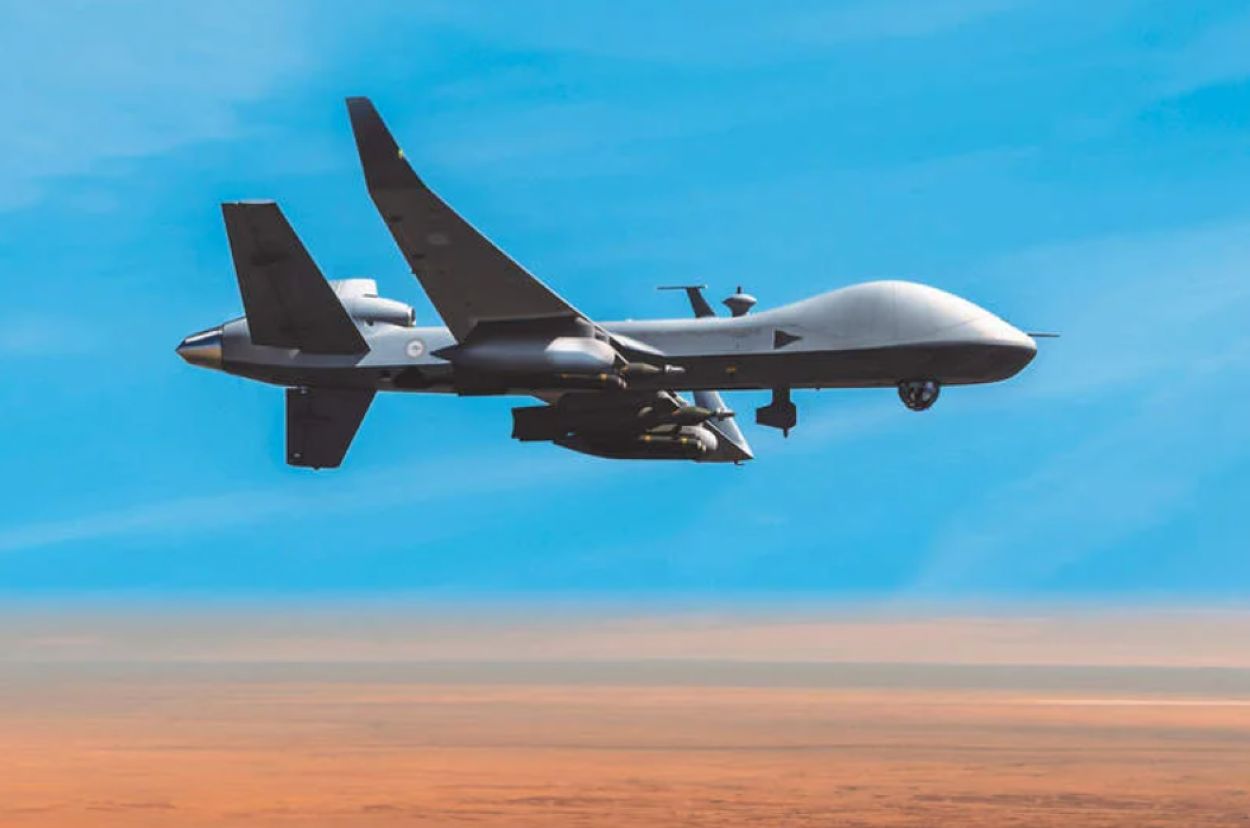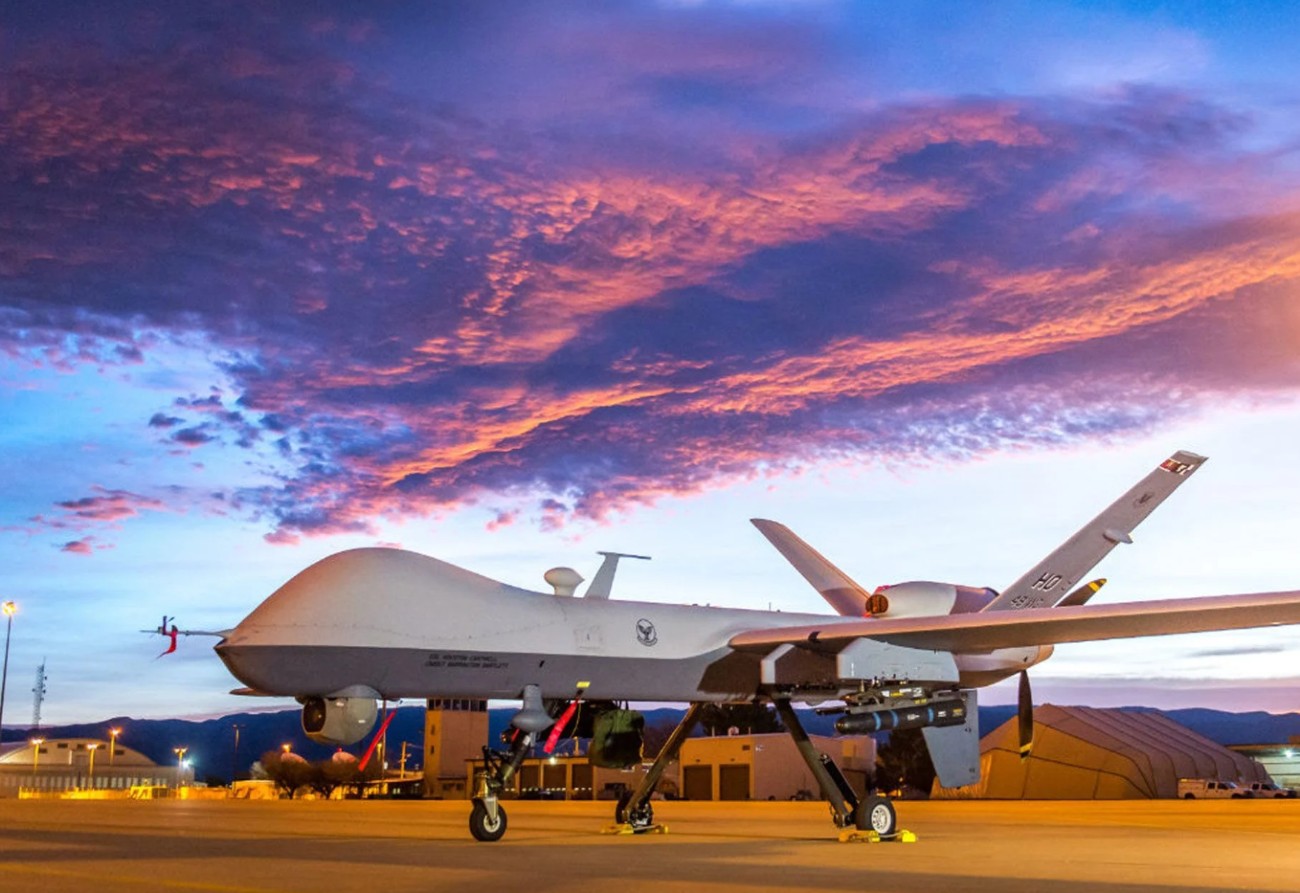In 2021, the US Air Force (USAF), for the first time, revealed its intention to place the last order for the ‘hunter-killer’ MQ-9 Reaper drone, with deliveries expected in 2023 and 2024.
The abrupt full stop to the purchase of MQ-9s is seen as an indication of the USAF seeing a limited role for the heavy drones in ‘non-permissive’ air spaces.
The abrupt end of purchase orders is a cause of concern for the manufacturing company General Atomics. Fourteen other countries, including India, operate the MQ-9 Reapers (also called Predator B). So far, India has been using MQ-9 on lease from the US, but the Indian government has approved the purchase of 31 MQ-9 drones for its armed forces through the Foreign Military Sales route.
Hence, the Air Force Special Operations Command (AFSOC) has suggested a future where MQ-9 Reaper drones act as ‘capital ships’ deploying smaller uncrewed aerial systems (UASs) to establish a sensor grid or a communications pathway for the joint force.
The USAF decision has raised concerns in the US Congress about the organization compromising its Intelligence, Surveillance, and Reconnaissance (ISR) capabilities. It has sent the manufacturing firm General Atomics into a tizzy. The AFSOC, on the other hand, along with the drone manufacturer, is exploring how to establish a network of small drones.
“Can we establish a network that goes 5 miles, 50 miles, 500 miles?” AFSOC boss Lt. Gen. Tony D. Bauernfeind told reporters on September 12 at an Air, Space, and Cyber Conference. “I don’t know; we have to work the physics and the tactics, techniques, and procedures to find out how far we can push these networks out, giving us that grid that we need to support the joint force.”
The final delivery will bring the total number of MQ-9s in the USAF fleet to 363.
These drones serve as the backbone of the USAF’s combat drone fleet. In 2022, while addressing the Congress members, Chief of Staff of the Air Force General Charles Brown emphasized having the right mix of capabilities to maintain and upgrade the current fleet and keep pace with new threats. Brown was unambiguous about Reaper being part of the US fleet to be deployed in permissive environments.
“The threat in the Middle East has been permissive, yet we will still need technology for less permissive environments,” Brown had told lawmakers. However, the platform’s survivability has been under scanner in high-end contested environments in the face of advanced air defenses and long-range sensors possessed by the country’s adversaries like China and Russia.

Brown will take over as the top military officer of the US at the end of September 2023 as the US Congress has voted in its favor. He has expressed interest in accelerating change in the USAF to maintain deterrence.
The Future Of MQ-9s
The USAF is, therefore, opting for smaller, stealthier, and better networked ISR technologies to ensure their survivability in highly contested environments.
The UAS network suggested by the AFSOC chief is a vital component of an adaptive airborne enterprise (A2E) project. Under the project, MQ-9s will evolve beyond their traditional role of intelligence gathering and strike platforms. The adapted MQ-9 will act as a “mothership” commanding and controlling additional small UAS platforms equipped with their latest kinetic and non-kinetic capabilities and sensors.
They will serve as the mobile command and control center for a network of small drones that will form an “expansive sensing grid” and help special operations forces get deep into the battlespace.
“The future is this: AFSOC operators will have the capability to operate an MQ-9 Reaper while also managing and synchronizing (small) UAS platforms capable of delivering various payloads from anywhere — whether that be in the back of an AC-130, home station, or a hotel room halfway around the world,” the 27th Special Operations Wing said in a release last month.
The Heavyweight MQ-9s
MQ-9 first took flight in 2001, and the ISR infrastructure related to these drones has remained the same. “It takes over 150 personnel or Airmen to maintain a single MQ-9 orbit. That doesn’t seem too unmanned to me,” Bauernfeind contends.

The Reapers form the heaviest drone category of the US Department of Defense. The AFSOC runs a fleet of 50 MQ-9As with three MQ-9Bs on the way. Bauernfeind wants to experiment with automated software so that a single human operator can control three Reapers.
“We’re going to wrestle with that … because this is going to change how we think and the architecture required,” he said.
Bauernfeind appears to be in step with his predecessor, Lt. Gen. James C. Slife, now deputy chief of staff for operations.
“When we got into the remotely piloted aircraft business in the 1990s, we did it the way that you might expect the Air Force to do it … one pilot, one cockpit, one data link to one airplane,” Slife said at an AFA Warfighters in Action in 2022. “That’s a very manpower-intensive methodology for operating aircraft.”
Automating some tasks could significantly reduce that manpower requirement, Bauernfeind opined. And while the Air Force has been slow to adopt such technologies, it has started to do so in areas like automatic takeoff and landing and satellite communication launch and recovery, which have extended Reaper on-station time by 35 percent — a boon for combatant commanders.
- Ritu Sharma has been a journalist for over a decade, writing on defense, foreign affairs, and nuclear technology.
- She can be reached at ritu.sharma (at) mail.com




